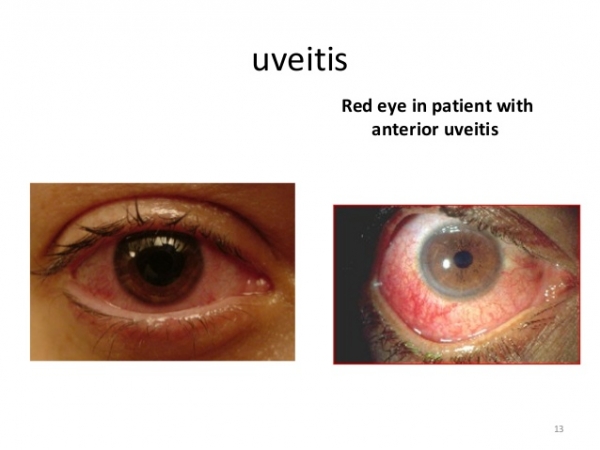Bangabandhu Sheikh Mujib Medical University
COURSE: DTCD
DISCIPLINE: PULMONOLOGY
PAPER: OSPE (Ten stations)
Q.1. How will you counsel a 48 years old diabetic patient who will received CAT-II anti-TB drugs for smear positive PTB?
Checklist:
|
Greetings & self-introduction |
0.5 |
|
Discussion about disease and DM |
1.0 |
|
Discussion about drug |
1.0 |
|
Indication: why prescribed |
1.0 |
|
Side effects |
1.0 |
|
Assurance about side effects |
1.0 |
|
Duration of treatment and time of follow up |
1.0 |
|
Where will you get drugs/DOT |
1.0 |
|
What will happen if there is incomplete treatment |
1.0 |
|
Aware about use of mask |
0.5 |
|
Feedback |
1.0 |
Bangabandhu Sheikh Mujib Medical University
COURSE: DTCD
DISCIPLINE: PULMONOLOGY
PAPER: OSPE (Ten stations)
Q.2. Show the procedure of correct use of metered dose inhaler (MDI) with and without spacer to an asthma patient?
- Correct use of MDI…………………………………………………………….5
- Shake and position of device in between thumb and index finger
- Exhale
- Place the mouth piece in between lips
- Coordination in between deep inspiration and pressure over canester
- Hold the breath for 10 sec, wash mouth after using device.
- Correct use of spacer ………………………………………………………..5
- Shake the device
- Fixed with spacer
- Place it in between lip
- 1 puff and 5 times breathing in spacer.
- Hold each breath for 10 sec .(If possible).
Bangabandhu Sheikh Mujib Medical University
COURSE: DTCD
DISCIPLINE: PULMONOLOGY
PAPER: OSPE (Ten stations)
Q.3. A 45 years old man was diagnosed as a case of right middle lobe bronchiectasis and aspergilloma in right upper lobe. Previously he was admitted in local hospital three times for recurrent infective exacerbation . He also received blood transfusion for massive haemoptysis . How will you counsel him?
Checklist:
|
Greetings & self-introduction |
0.5 |
|
|
Discussion about disease and its present complications |
1.0 |
|
|
Advice regarding posture and physiotherapy |
1.0 |
|
|
Discussion about medical management |
2.0 |
|
|
Discussion about surgical management |
2.0 |
|
|
Cyclical/long term antibiotic therapy |
1.0 |
|
|
Vaccination |
1.0 |
|
|
Complications, if it is not adequately managed |
1.0 |
|
|
Feedback |
0.5 |
|
Bangabandhu Sheikh Mujib Medical University
COURSE: DTCD
DISCIPLINE: PULMONOLOGY
PAPER: OSPE (Ten stations)
Q.4. Q.4. Look at the picture- This patient came in OPD with the complain of cough , right sided chest pain and recurrent haemoptysis for two months .
- What are the findings of the above pictorial?................................................................2
- Partial ptosis
- Miosis
- Enopthalmus
- Is there any name of this clinical presentation? What are the other components of this presentation ?................................................................................................................2
Horner’s Syndrome . Anhydrosis .
- What may be the underlying cause in this patient?What may be the other causes…….3
Left sided bronchial carcinoma . Stroke , tumour or trauma in the neck .
- What is the possible site of lesion?.................................................................................2
Involvement of left sided sympathetic chain .
- Mention two important investigations for this patient. ..................................................1CT scan of chest and Fiber optic bronchoscope (FOB)
5. A 65 years male, smoker admitted in hospital with right sided chest pain . He had following chest X-ray with him .(5x2)
- Mention the characteristics features of the cavitary lesion ?
- Thick wall cavity
- Minimum amount of fluid
- Ecentic cavity
- Absence of surrounding inflammation .
- What is the cause of this cavitary lesion ?
Bronchial carcinoma . Histological type more likely squamous cell carcinoma .
- What are the other causes of cavitary lesion ?
- Pyogenic lung abscess
- Tubercular cavity
- Weigner’s granulomatosis
- Fungal infection
- What other findings you want to look at during physical examination ?
Digital clubbing , metastatic lymphnode
- What investigations you should perform ?
CT scan of chest and CT guided FNAC , FOB
Bangabandhu Sheikh Mujib Medical University
COURSE: DTCD
DISCIPLINE: PULMONOLOGY
PAPER: OSPE (Ten stations)
Q. 6 ) A 62 years old man presented to a pulmonologist with cough for 3 months, shortness of breath for 15 days and having an X-ray chest P-A view , showing left sided opaque hemithorax .
- Describe the bronchoscopic view of this picture ?..................................................5X2 =10
Left sided endobronchial mass lesion completely occluding the lumen of left principal bronchus.
- Is the carina normal ?
Normal .
- If it is a Non small cell carcinoma, is surgical treatment possible ?
Not possible .
- How will you give palliative management for shortness of breath ?
Thermo plasty with stenting.
- What may be the histological type of bronchial carcinoma ?
Squamous cell carcinoma , small cell carcinoma , carcinoid tumour .
7) Look at the following arterial blood gas and serum electrolytes of a patient .
pH : 7.15 Pa CO2 : 50 Pa O2 : 75
Na + : 140 K+ : 5 Cl+ : 103 HCO3 : 17
- What type of acid base disorder present ?------------------------------------------------3
Metabolic acidosis with respiratory acidosis .
- Whether is it acute or chronic disorder ?..................................................................3
It is acute disorder.
- What is the anion gap ,either high or low ?..............................................................2
Anion gap :20 . It is high anion gap .
- What may be the underlying cause ?.........................................................................2
- COPD with hypoxia with lactic acidosis.
- COPD with diabetic Ketoacidosis .
8. Look at the following ECG :
- What is your diagnosis ? Describe the characteristics features of this ECG .
Palpitation , Atrial fibrillation . Absence of P wave and QRS complexes are in irregular interval .Rapid ventricular rate .
- What clinical findings will you get in this case ?
Pulse : irregularly irregular , pulsus deficit present ,features associated with underlying cause .
- What are the preferable investigations in this case ?
X-ray chest P/A view , Echocardiography.
- Write some respiratory causes of this ECG findings .
Pneumonia , COPD, pulmonary embolism etc
- What are the other causes of this ECG findings ?
Mitral valvular disease (MS,MR) , Hyper thyroidism , cardiomyopathy , Lone atrial fibrillation .
9. Look at the picture :
a) Write the name of the device . Write the characteristic features of it .
IntrathoracicTube . It has two ends . One end is introduced within thoracic cavity another end is connected to water seal drainage . There are multiple lateral opening near the first end . The tube is marked in cm . There is a radio opaque line in the tube .
b) Write the utilities of the device .
Evacuation of unwanted air (pneumothorax) , pleural fluid (pleural effusion) , pus (empyema thoracis) , blood (haemothorax in trauma , post surgical).
c) Describe the insertion site .
In 4th and 5th intercostal space within triangle of safety (between anterior and posterior axillary fold)
d) How will you follow up the cases ?
Daily amount of fluid is evacuated, movement of fluid column in tube (for presence of fistula), clinical examination of chest , chest X-ray.
e)Write complications of the procedure .
Haemorrhage (trauma to intercostal vessel), vasovagal attack , lung injury , trauma to underlying structure according to insertion site (diaphragm , spleen , liver etc) , infection (eg. Empyema).
Q 10) A 71 years , male Wt :88kg , Ht :175cm and BMI 28.7 kg/m2, comes to you with the following spirometry tracing .
|
|
Normal |
Observed |
%predicted |
Post-dilator |
|
Spirometry FVC(l) FEV1(l) FEV1/ FVC(%) FEF25-75(L/s) MVV(L/min) Volumes TLC(L) RV/TLC(%) DLCO(mL/min per mm Hg)
|
4.29 3.29 77 2.8 125
6.61 35 25 |
1.94* 1.03* 53* 0.4* 51*
9.37* 75* 10* |
45 31
15 41
142 214 40 |
2.76 1.25
0.5 |
This patient had a smoking history of 74 pack-years and was still smoking. He complained of progressive breathlessness and wheezing on mild exertion. He had a family history of pulmonary disease.
- How would you interpret test?
- Interpretation of Data .
- FEV1/FVC ratio = 53 ,so it is obstructive
- FEV1 = 31% , very severe obstruction
- Gestal method : scooping/concavity upwards indicate obstructive air way disease.
- Is the test is reversible ?
Reversibility positive .
FEV1 >200ml and >12% increased .
- Can you make a statement as to the patient’s underlying lung disease?
COPD with reversibility component
- Does the reduced DLCO suggest anything?
Significantly decreased , indicate presence of emphysema ,
- What is your management plan ?
LABA ,LAMA , ICS



Comments